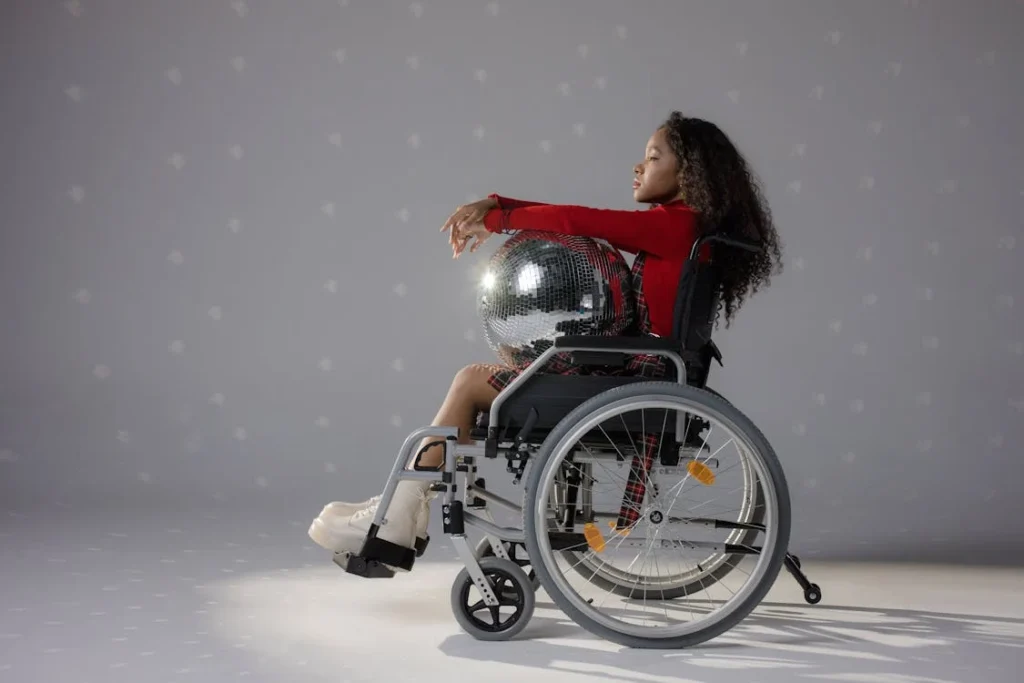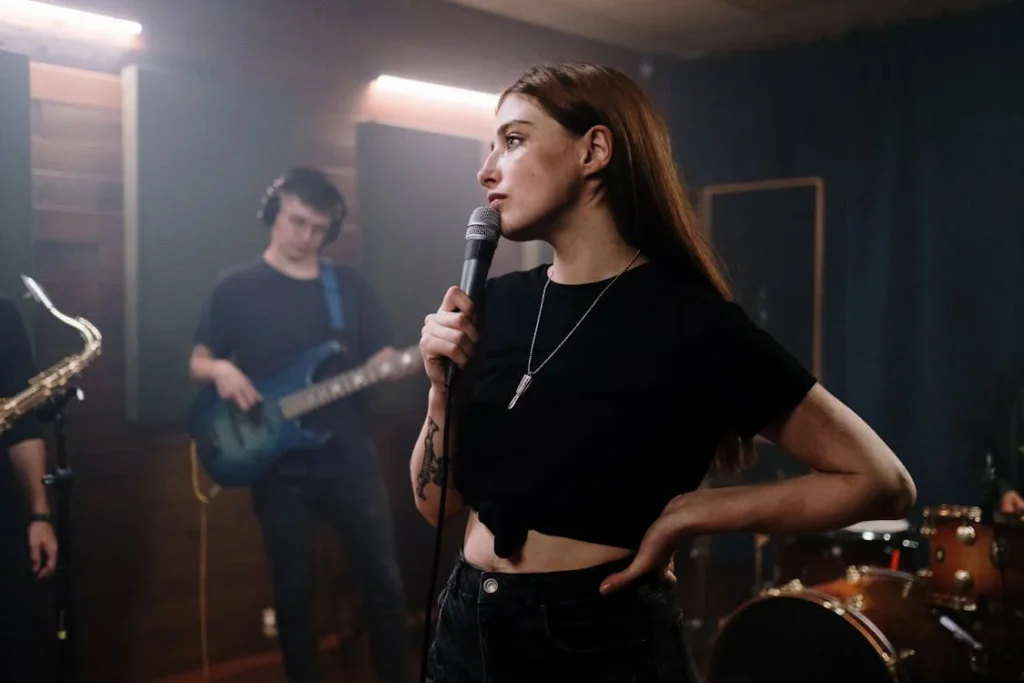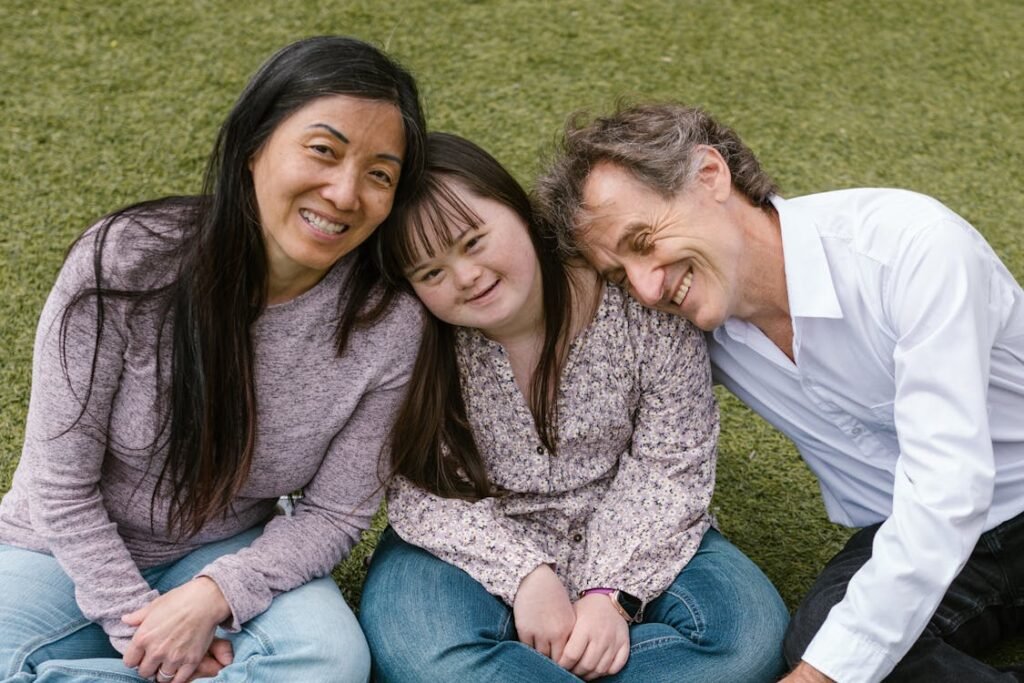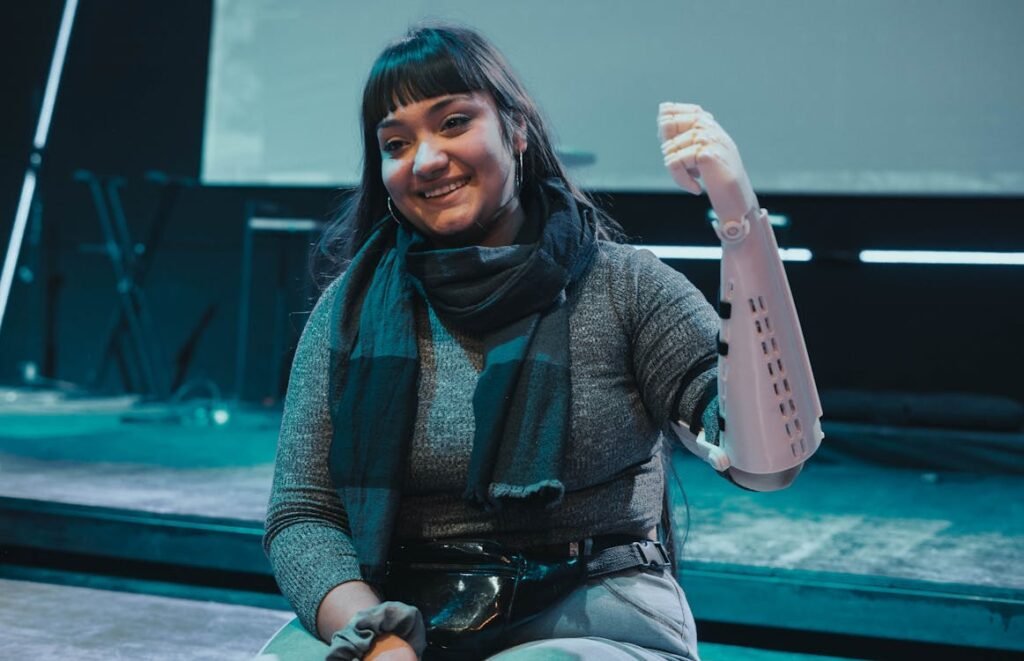Public perception of disabilities has been shaped by many factors over time—medical advancements, policy changes, and social activism. But one of the most powerful forces driving change today is the influence of celebrities. Whether they have disabilities themselves or use their platforms to advocate for inclusivity, celebrity figures are breaking down stereotypes and pushing society toward greater acceptance.
Through movies, music, sports, and social media, well-known personalities are shifting how the world sees disability. Instead of being viewed as a limitation, disability is increasingly being recognized as just another part of human diversity. Celebrities have the ability to reach millions, and their voices help challenge outdated ideas, inspire policy changes, and increase visibility for disability-related issues.

The Power of Celebrity Advocacy in Disability Awareness
Celebrities have always played a role in shaping public opinion, influencing everything from fashion trends to social movements. When they use their platforms to advocate for disability rights, their impact is profound.
Their voices reach millions, helping to break long-standing misconceptions and normalize disability in mainstream culture. Whether they are actors, musicians, athletes, or activists, these public figures bring attention to the challenges faced by people with disabilities while also highlighting their achievements and contributions.
Changing the Narrative: From Pity to Empowerment
For many years, disability was often portrayed in the media through a lens of pity. Stories about people with disabilities were framed as tales of tragedy or struggle, reinforcing the idea that disability was something to be “overcome” rather than accepted as part of human diversity.
Celebrity advocates are actively shifting this narrative. Instead of focusing on limitations, they highlight resilience, talent, and independence, helping to redefine what it means to live with a disability.
Actors with disabilities are securing major roles in film and television, proving that authentic representation matters. Musicians and artists with disabilities are using their work to challenge perceptions, showing that creativity is not limited by physical ability.
Athletes competing at the highest levels, including the Paralympics, are demonstrating that disability is not a barrier to excellence. This shift in representation has a direct impact on society, influencing how people with disabilities see themselves and how others treat them.
The Influence of Social Media in Amplifying Voices
Social media has given celebrities a direct line of communication with the public, allowing them to raise awareness in ways that were not possible in the past.
Many advocates use platforms like Instagram, Twitter, and TikTok to share their personal experiences, promote accessibility, and call out discrimination. This real-time engagement allows them to connect with audiences on a deeper level, fostering conversations that challenge stereotypes.
Through social media, disability advocates have been able to bring attention to issues that mainstream media often overlooks. When an airport mishandles a wheelchair, when a business lacks accessibility, or when a major event fails to accommodate disabled attendees, celebrities with large followings can bring these issues into the spotlight.
Their influence pressures companies and institutions to take action, leading to real change in policies and attitudes.
The power of social media also allows people with disabilities to share their own stories. Celebrity advocates often amplify these voices, ensuring that disability representation is not just limited to famous figures but extends to everyday individuals who are fighting for inclusion.
This creates a more authentic and diverse conversation about disability, moving beyond token representation to real, systemic change.

Representation in Entertainment: Breaking Barriers in Film, TV, and Music
The entertainment industry has long influenced how society views disability. Historically, people with disabilities were either absent from major films and television shows or portrayed through exaggerated stereotypes.
Characters with disabilities were often played by non-disabled actors, reinforcing the idea that disability was something separate from mainstream society rather than a lived experience.
However, the rise of celebrity advocates in entertainment is challenging these outdated portrayals and creating space for authentic representation.
Actors and Filmmakers Pushing for Authenticity
In recent years, there has been a growing demand for disabled actors to play disabled roles. Representation matters—not just for accuracy but for the broader cultural impact it has.
When people with disabilities see themselves portrayed authentically on screen, it fosters a sense of belonging and self-acceptance. At the same time, it educates audiences who may have had little exposure to disability in their everyday lives.
Some actors with disabilities have become vocal advocates for greater inclusion in Hollywood. They are not only securing roles but also pushing for behind-the-scenes changes that ensure accessibility in film production.
This shift is slowly reshaping industry norms, making it clear that people with disabilities belong in front of and behind the camera.
Filmmakers and producers are also recognizing the importance of authentic storytelling. Documentaries and independent films focusing on disability narratives have gained recognition, bringing real-life experiences into mainstream media.
These projects challenge outdated perceptions and highlight the diversity of disability experiences across cultures.
Musicians Redefining Disability in the Arts
Music is another powerful medium where celebrity advocates are making an impact. Historically, disabled musicians have faced barriers in the industry, from inaccessible venues to misconceptions about their abilities.
However, many artists have broken through these barriers, proving that talent is not limited by disability.
Some musicians with disabilities use their platforms to not only showcase their artistry but also to advocate for accessibility in the industry.
Their success sends a message to aspiring musicians with disabilities that a career in music is possible, while also pushing for necessary changes in concert venues, recording studios, and music education programs.
In recent years, more inclusive music festivals and performances have emerged, ensuring that accessibility is considered at every level.
From sign language interpreters at concerts to assistive technology that enables musicians with mobility impairments to play instruments, these changes are transforming the way disability is viewed in the music industry.
The presence of disabled artists in the mainstream music scene also helps shift societal perceptions. Rather than being seen as an exception, their success normalizes the idea that people with disabilities can be leaders in creative industries.
This broader representation in arts and entertainment is a critical step toward greater cultural inclusion.

Sports Icons and Paralympians: Redefining Strength and Ability
In the world of sports, athletes with disabilities have long faced challenges in gaining recognition and equal opportunities. However, celebrity athletes—especially Paralympians—are changing how disability is perceived in athletics and beyond.
Through their achievements, they are proving that disability does not define limits, but rather, resilience and talent shape true success.
The Rise of Paralympic Champions in the Public Eye
For many years, disabled athletes struggled for mainstream recognition, often overshadowed by their non-disabled counterparts. The Paralympics, though a prestigious event, did not receive the same level of media coverage as the Olympics.
However, this has been changing due to the rise of high-profile Paralympians who have captured the public’s imagination with their exceptional performances.
Athletes such as Tatyana McFadden, a wheelchair racer who has won multiple Paralympic gold medals, and Deepa Malik, the first Indian woman to win a medal in the Paralympics, have become household names.
Their stories are not just about their victories on the track or in the pool—they are about challenging stereotypes and proving that athleticism is not defined by traditional standards of ability.
Paralympic success stories have also played a role in shifting how sports brands and sponsors view disability. Many leading athletic brands, once hesitant to feature disabled athletes in their campaigns, are now embracing them as ambassadors.
Seeing athletes with disabilities in high-profile advertising campaigns and endorsements sends a strong message: disability is not a weakness—it is a different way of competing and excelling.
Changing Attitudes Toward Disability in Mainstream Sports
Beyond the Paralympics, disability-inclusive sports have been gaining momentum. Adaptive sports programs, which provide opportunities for athletes with disabilities to train and compete, have expanded globally.
More major sporting events now integrate accessibility considerations, ensuring that venues, equipment, and training facilities are designed to accommodate all athletes.
Some non-disabled sports organizations have also begun to embrace disability inclusion. Mixed-ability competitions, where disabled and non-disabled athletes compete together in adapted formats, are becoming more common.
This integration not only normalizes disability in sports but also fosters a culture of mutual respect and learning.
Athletes with disabilities are also using their platforms to advocate for better accessibility in everyday life. Many speak out on issues beyond sports, such as disability employment rights, public infrastructure improvements, and inclusive education policies.
Their influence extends beyond the playing field, shaping policies and attitudes that affect millions of people with disabilities worldwide.
The Impact of Representation in Sports Culture
Sports have a unique ability to inspire, and when people with disabilities see themselves represented by elite athletes, it changes perceptions at every level of society.
A child with a limb difference who watches a Paralympian win a gold medal may see possibilities that once felt out of reach. A company executive watching a disabled athlete excel may rethink how they approach workplace accessibility.
A community seeing an adaptive sports program thrive may work to make public spaces more inclusive.
At Robobionics, we understand the deep connection between mobility, independence, and confidence. Just as our prosthetic solutions like Grippy™ restore movement and function, representation in sports restores belief in what is possible.
When athletes with disabilities are celebrated for their skill and determination, they redefine ability—not just in sports, but in society as a whole.

Political and Social Leaders: Advocating for Systemic Change
While celebrities in entertainment and sports have played a crucial role in changing perceptions of disability, political figures, activists, and social leaders with disabilities have had an equally powerful impact.
Their work goes beyond representation in media and athletics—they push for systemic change, influencing policies, laws, and societal attitudes toward accessibility and inclusion.
Disability in Politics: Leading by Example
Having political leaders with disabilities in positions of power has helped challenge long-standing stereotypes about what disabled individuals can achieve. In many parts of the world, disability has often been associated with dependence or a lack of capability.
However, politicians with disabilities are proving that leadership and decision-making are not defined by physical ability but by experience, intelligence, and commitment to public service.
One of the most well-known examples is Franklin D. Roosevelt, the 32nd President of the United States, who governed from a wheelchair due to polio.
Although he often concealed the extent of his disability due to societal attitudes at the time, his leadership during the Great Depression and World War II proved that physical disability was not a barrier to effective governance.
In more recent times, politicians such as Senator Tammy Duckworth in the U.S., who lost both legs in military service, have been vocal advocates for disability rights.
Her presence in government has brought greater awareness to accessibility issues, leading to stronger policies supporting veterans and civilians with disabilities.
In India, disability rights activist and Member of Parliament Dr. Rajiv Rajan has been a key figure in pushing for better accessibility laws and social inclusion policies.
His work has influenced government initiatives aimed at making public spaces, education, and employment opportunities more accessible to people with disabilities.
The Role of Activists in Driving Policy Change
While politicians work within government systems, disability rights activists operate at the grassroots level, raising awareness and pushing for legal reforms. Many of these activists have disabilities themselves, using their own experiences to highlight the barriers faced by millions of others.
Social movements like the Disability Rights Movement in the U.S. and the Accessible India Campaign have gained traction due to the tireless efforts of activists who fight for policy changes in infrastructure, healthcare, and education.
These movements have led to groundbreaking legal frameworks, such as the Americans with Disabilities Act (ADA) and the Rights of Persons with Disabilities Act in India.
The power of these movements has been amplified by social media, where activists can share their messages globally. Many disability advocates use online platforms to highlight everyday accessibility challenges, call out discrimination, and educate the public about disability rights.
Their efforts have pressured governments, businesses, and institutions to take meaningful action toward inclusion.
Social Leaders and Community Impact
Beyond government and activism, social leaders—such as educators, healthcare professionals, and business executives—are also playing a role in reshaping how disability is perceived.
Schools are integrating inclusive education models, hospitals are implementing better accessibility in healthcare, and businesses are adopting disability-friendly hiring practices.
Many global companies have been influenced by disability advocates to adopt more inclusive policies. From implementing workplace accessibility measures to hiring employees with disabilities, businesses are beginning to recognize that inclusion is not just about compliance—it is about valuing diverse perspectives and talents.
At Robobionics, we believe that systemic change is essential for creating an inclusive world. Just as our prosthetic solutions like Grippy™ provide independence at an individual level, broader social and political changes ensure that people with disabilities have the same opportunities as everyone else.
Representation in leadership, activism, and business is not just about visibility—it is about creating lasting impact.

Disability Advocacy in Fashion and the Beauty Industry
The fashion and beauty industries have long shaped cultural standards of appearance and identity, often promoting narrow definitions of beauty.
For decades, people with disabilities were largely excluded from mainstream fashion campaigns, runway shows, and beauty advertisements.
However, thanks to the efforts of celebrity advocates and industry leaders, the fashion world is now embracing inclusivity, redefining beauty, and challenging outdated notions of perfection.
The Rise of Disabled Models and Inclusive Fashion
The visibility of disabled models in major fashion campaigns has increased significantly in recent years. Celebrities and advocates with disabilities are pushing brands to rethink how they approach diversity, leading to more inclusive advertising and product designs.
Models with prosthetic limbs, wheelchair users, and individuals with various disabilities are now gracing magazine covers, walking the runway, and starring in beauty campaigns.
Fashion weeks around the world, including London and New York, have featured adaptive fashion lines designed specifically for people with disabilities.
These collections go beyond aesthetics—they focus on functionality, comfort, and ease of wear. Features like magnetic closures, adjustable fits, and sensory-friendly fabrics are making fashion more accessible while proving that style should be inclusive for everyone.
Several major brands have embraced this movement by hiring models with disabilities and featuring them in global advertising campaigns. This shift not only provides representation but also helps change societal attitudes.
When people see disability included in everyday fashion and beauty advertisements, it normalizes inclusion and challenges traditional beauty standards.
Adaptive Beauty: Representation in the Cosmetics Industry
The beauty industry has also seen a growing movement toward inclusivity. Celebrity makeup artists and beauty influencers with disabilities have used social media to showcase how makeup, skincare, and haircare can be adapted for different needs.
From tutorials on how to apply makeup with limited mobility to brands developing accessible packaging, the industry is slowly recognizing the importance of disability inclusion.
One of the biggest breakthroughs in adaptive beauty has been the introduction of easy-to-use packaging and tools designed for individuals with limited hand function.
Makeup brands have launched products with larger grips, pump dispensers, and one-hand application features, making beauty more accessible to those with physical impairments.
Additionally, disabled influencers and celebrities have used their platforms to challenge traditional beauty norms. Rather than hiding scars, prosthetics, or assistive devices, many are embracing them as part of their personal style.
This cultural shift moves away from the outdated idea that people with disabilities need to “blend in” and instead promotes self-expression and confidence.
Why Representation in Fashion and Beauty Matters
The inclusion of people with disabilities in the fashion and beauty industries is about more than just aesthetics—it is about empowerment, visibility, and cultural change.
When people with disabilities see themselves represented in campaigns, it reinforces the idea that they belong in all aspects of society, not just in spaces specifically designed for disability advocacy.
Fashion and beauty are powerful cultural forces that influence self-esteem, identity, and public perception. By integrating disability into these industries, society moves closer to a future where differences are embraced rather than marginalized.
At Robobionics, we understand that empowerment is about more than mobility—it is about confidence, visibility, and breaking down barriers.
Just as we develop advanced prosthetic solutions like Grippy™ to restore independence, we support the inclusion of people with disabilities in every industry, ensuring that representation is not a trend but a lasting movement.

The Role of Disability Representation in Children’s Media and Education
Cultural change begins early, and the way children learn about disability shapes their attitudes for life. Historically, children’s books, television shows, and school curriculums rarely included characters with disabilities, reinforcing the idea that disability was something “other” rather than a natural part of human diversity.
However, thanks to celebrity advocates, educators, and content creators, disability representation in children’s media and education is improving. These efforts are fostering a new generation that views disability through the lens of inclusion rather than exclusion.
Positive Representation in Children’s Books and Cartoons
For many years, disability was either absent from children’s stories or portrayed in a way that reinforced stereotypes.
Characters with disabilities were often shown as victims needing help or as sources of inspiration rather than as ordinary people leading full lives. However, a new wave of inclusive storytelling is changing this.
Popular children’s books now feature main characters with disabilities, treating them as equals rather than focusing solely on their physical conditions. Stories about children with prosthetic limbs, hearing aids, or neurodiverse traits are helping young readers see disability as a normal part of life rather than something unusual.
Animated series have followed suit, introducing characters with disabilities in everyday roles rather than as special cases. Shows like Pablo—an animated series about a boy with autism—help children understand neurodiversity in a way that feels natural and relatable.
Celebrity advocates have played a major role in pushing for these changes. Many actors, authors, and activists with disabilities have worked closely with publishers and media producers to ensure authentic representation.
Their influence has helped create content that not only includes disability but does so in a respectful and empowering way.
Schools Adopting More Inclusive Curriculums
Education systems around the world are beginning to reflect these cultural shifts by integrating disability awareness into school curriculums.
Many schools now include discussions about disability rights, accessibility, and the importance of inclusion. This is a departure from the past, where disability was often either ignored in education or presented purely from a medical perspective.
Inclusive education goes beyond classroom discussions. Some schools have introduced adaptive learning environments where students with and without disabilities learn together.
This integration helps non-disabled children develop empathy and understanding, while disabled students gain the same academic and social opportunities as their peers.
Teachers are also receiving more training on how to support students with disabilities. Whether it is making learning materials more accessible, using assistive technology, or implementing flexible teaching strategies, schools are increasingly recognizing that disability inclusion benefits everyone.
How Media and Education Shape Long-Term Attitudes
The way children engage with disability in media and education directly influences how they will interact with disabled individuals in adulthood.
When disability is normalized in children’s books, cartoons, and classrooms, it creates a generation that values accessibility, inclusion, and equal opportunity.
These changes are not happening in isolation. Celebrity advocates, authors, educators, and activists are all contributing to a cultural shift where disability is no longer seen as a limitation but as part of the rich diversity of human experience.
By ensuring that children grow up seeing and respecting disability in positive ways, society moves toward a future where inclusion is second nature rather than an afterthought.
At Robobionics, we believe that representation starts early. Just as we develop prosthetic solutions like Grippy™ to empower individuals, we support efforts that ensure disability is represented positively in all areas of life—including the stories children grow up with and the lessons they learn in school.
Conclusion
Celebrity advocates are playing a crucial role in changing how society views disability. Whether through film, music, sports, politics, fashion, or education, their influence is breaking down stereotypes, increasing visibility, and pushing for meaningful inclusion. When well-known figures speak openly about disability, they challenge outdated perceptions and create space for more authentic representation. Their advocacy is not just about awareness—it leads to real changes in policy, accessibility, and cultural attitudes.
Representation matters, and when people with disabilities see themselves reflected in mainstream media, leadership, and public life, it reinforces the idea that disability is not a limitation but a part of human diversity. The rise of disability inclusion in children’s media, adaptive fashion, and professional sports is proof that progress is being made. However, there is still work to be done to ensure that inclusion becomes the norm rather than the exception.
At Robobionics, we believe in empowerment through innovation and representation. Just as our prosthetic solutions like Grippy™ restore independence, the voices of disability advocates restore dignity, visibility, and opportunity. By continuing to amplify these voices, we move closer to a world where everyone, regardless of ability, is valued and included.



